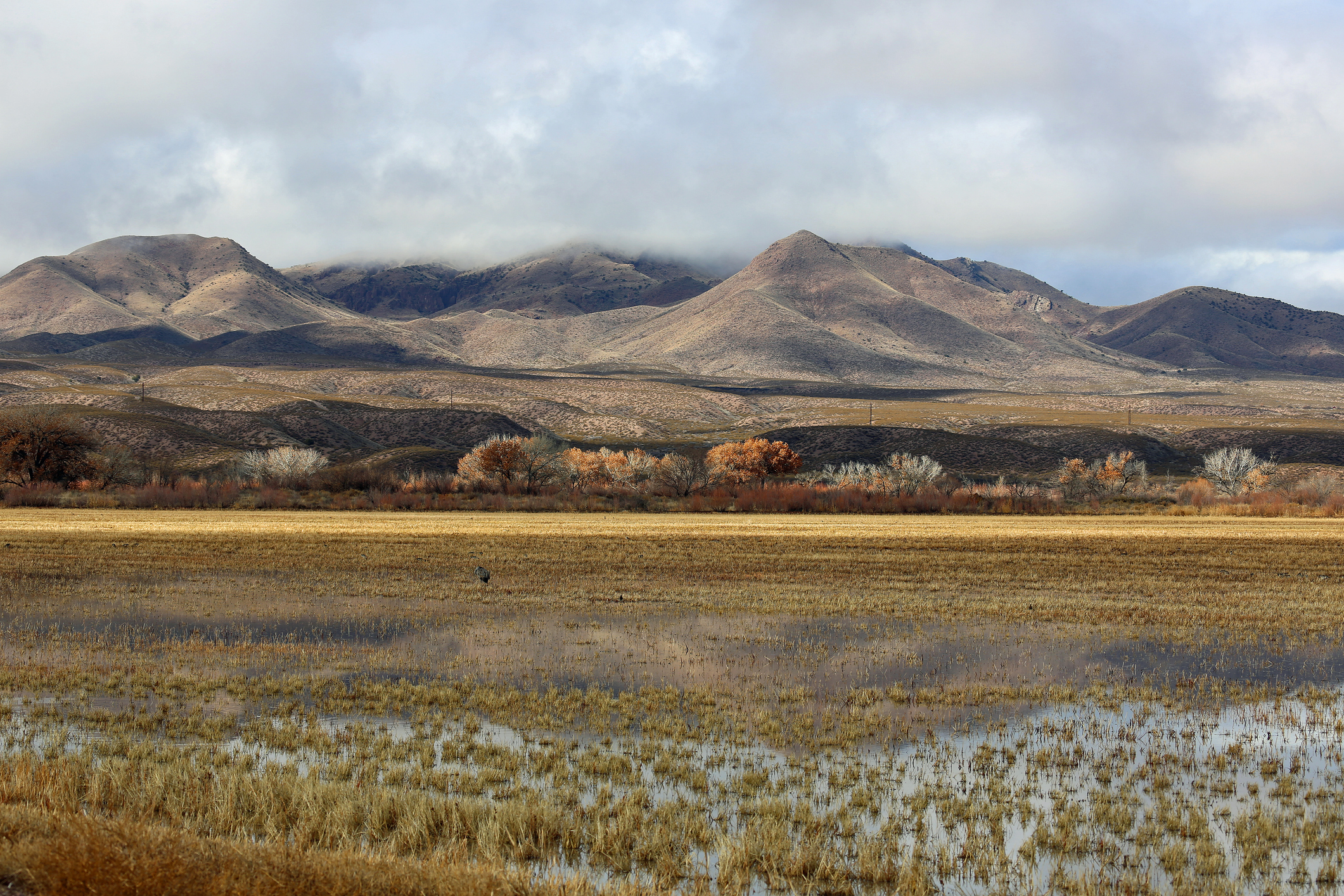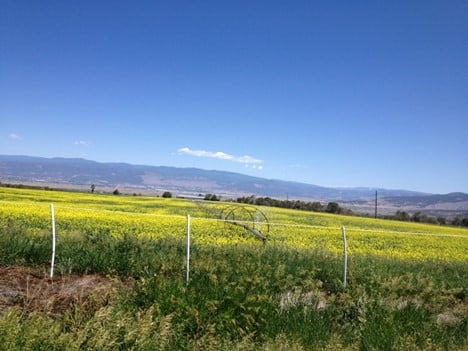


Water Law Wisdom: The Turner v. Bassett Case and New Mexico Water Rights
By: Bruce Frederick
The case of Turner v. Bassett[1] is an excellent primer on some important technical aspects of New Mexico water law, as well as a cautionary tale for lawyers and realtors helping clients to sell formerly irrigated land or to transfer irrigation water rights apart from the land. In New Mexico, water rights used for irrigation are appurtenant to the land.[2] This means that if a deed transferring land fails to include an express water rights reservation, any water rights appurtenant to the land will pass to the buyer along with the land.[3] But water rights can also be “severed” from the land by a permit issued by the Office of the State Engineer (“OSE”) and transferred to new places or purposes of use.[4]
The fight in Bassett was over who owned 312.5 acre-feet/year of highly valuable irrigation water rights developed but no longer used on 125 acres of land in the Estancia Valley, New Mexico. The Bassetts sold the land to Turner in 1984, and neither the deed nor the purchase contract had mentioned any water rights. However, the Bassetts argued that the water rights had been severed by permit, and therefore, there was no need to include an express water rights reservation in the deed conveying the land to Turner.
It was undisputed that, in 1974, Ray Bassett had obtained a permit from OSE severing the water rights and transferring them to new places and purposes of use, namely, to supply drinking water to the local population that ultimately became the Town of Edgewood. However, although that population was steadily increasing, only a fraction of the water rights was needed in 1984 to meet the demand for water. As a result, the Bassetts had not fully applied all of the water rights to the new purpose and place of use when they sold the land to Turner, but they had obtained a series of extensions of time from the OSE in which to do so, so their permit was in good standing. Although that did not affect the validity of their permit, it did create an opening for Turner under the holding of Sun Vineyards, Inc. v. Luna County Wine Development Corp.[5]
In New Mexico, a permit to transfer water rights is technically not “vested” until the water is fully applied to beneficial use at the “move-to” location in accordance with all permit and statutory requirements.[6] Permittees are usually required to use the full amount of water subject to the permit at the move-to location and file appropriate “proofs of beneficial use” (“PBU”) within three years or risk cancellation of their permit. However, if despite reasonable diligence a permittee cannot fulfill this requirement, either in whole or in part, the permittee must apply for and obtain extensions of time every three years, or risk permit cancellation, until all of the water is placed to beneficial use at the move-to location.[7]
The process of vesting a transfer permit used to supply drinking water to a growing population necessarily requires decades to complete, which is perfectly fine under the applicable statutes so long as the permittee obtains the necessary extensions of time. In New Mexico, reasonable diligence in putting water to beneficial use in accordance with law is generally all that is required to maintain a permit or a water right over time.[8]
However, Sun Vineyards called this fundamental precept of western water law somewhat into question. Prior to selling a parcel of land, the seller in Sun Vineyards had obtained an OSE permit to sever a portion of the irrigation water rights from the parcel and to transfer that portion to an adjacent parcel. In other words, the seller desired to “spread” its existing water rights over a larger area. However, at the time of the sale, the seller had not filed a final PBU with the OSE, which turned out to be a fatal flaw from the seller’s perspective, at least under the facts of Sun Vineyard.
The deed conveying the parcel in Sun Vineyards included the clause, “with water rights.” It did not include a water rights reservation and none of the conveyance documents mentioned the transfer permit previously obtained by the seller. The buyer apparently had no idea that any of the water rights historically used to irrigate the conveyed parcel would be withheld from the sale, and therefore, filed a suit to quiet title to the full amount of water rights, and also brought tort and contract claims.
The Supreme Court held for the buyer, explaining:
[Although] approval of the [transfer permit] would have permitted the [seller] to undertake spreading [of the water rights], the transfer would not vest until the spreading ripened into valid rights through beneficial use as documented by final [PBUs]. … Here, [the seller] did not reserve the right to continue the [statutory] procedure necessary to accomplish a beneficial spreading of water rights from the [conveyed parcel]. Conveyance of the [parcel] without reservation resulted in the discontinuation of a procedure which could have reduced existing water rights through their proportionate transfer to adjacent land. … In other words, once [the seller] sold the land, without reservation of rights, the procedure necessary to accomplish a beneficial use of water through spreading was interrupted and a proportionate [severance and] transfer from the conveyed land was prevented from vesting.[9]
In other words, because the seller had not filed a final PBU with OSE, the severance and transfer process were “discontinued,” and therefore, the water rights subject to the permit remained appurtenant to the parcel conveyed to the buyer. This is a unique and also short-lived holding.
Although Bassett did not formally reverse Sun Vineyards, it essentially limited the case to its facts. Practically speaking, Bassett rewrote the holding of Sun Vineyards to clarify the law applicable to permits that sever irrigation water rights from the land and transfer them to new uses and/or places, holding:
[A] bright line rule [as held in Sun Vineyards] that a severance is interrupted upon sale of the underlying land makes little sense when a contract or tort claim does not arise. Considering the statutes, regulations and practice of the State Engineer, a better approach to the issue of severance is to recognize the issuance of a permit as giving rise to a presumption that the land and water rights are no longer appurtenant. Without more, the conveyor of title to the land who has acquired a permit [from OSE] need not express in the conveyance documents that which is already presumed as a matter of law: the land passes without water.[10]
However, the presumption of severance is not conclusive:
If the seller acts as if the land and water remain as one, if the seller creates reasonable expectations in the buyer contrary to the presumption of severance, then those water rights remain within the power of the court to order full relief to the parties, just as this Court did in Sun Vineyards. We clarify, however, that a post-severance conveyance of land, even in the absence of reservation of rights, does not nullify a severance. Individuals who hold water rights, like the Bassetts, and follow the statutory and administrative procedures to effect a severance and initiate a transfer, may convey the underlying land severed from its former water rights, without necessarily reserving those water rights to the seller in the conveyance documents.[11]
Bassett was correctly decided. Had the Supreme Court in Bassett simply applied the holding in Sun Vineyards, as the Court of Appeals had, a community water supply would have been seriously compromised, the buyer would have obtained a windfall, and empty formality would prevailed over substance and standard OSE practice. However, the true moral of Bassett and Sun Vineyard is that conveyance documents should always carefully and fully describe the parties’ intentions regarding any water rights, even if every agrees there are none. If the seller obtained a permit severing irrigation water rights from the land before the sale, for example, the conveyance documents should make that clear. To avoid any possible confusion, the deed conveying the water rights could even include a contingent reservation clause, expressly reserving to the seller all appurtenant water rights, if any, if that is consistent with the parties’ intentions.
[1] 2005 NMSC 9, 137 NM 381.
[2] NMSA 1978, § 72-1-2 (1907).
[3] Twin Forks Ranch, Inc. v. Brooks, 1998-NMCA-129, 125 N.M. 674, 964 P.2d 838 (stating that appurtenant water rights, never severed by permit, passed to the buyer by contract without a reservation of rights).
[4] See NMSA 1978, § 72-5-22 (1907); NMSA 1978, § 72-5-23 (1941), and 19.26.2 NMAC (2005). These statutes are part of the New Mexico Surface Water Code, but New Mexico courts have applied these same laws to cases involving the transfer of groundwater. 2005 NMSC 9, n. 1.
[5] 1988 NMSC 75, 107 N.M. 524.
[6] See, e.g., Sun Vineyards, supra.
[7] See, e.g., 19.26.2 NMAC (2005).
[8] See, e.g., Sun Vineyards, supra.
[9] 760 P.2d at 1293.
[10] 2005 NMSC 9, ¶ 24.
[11] 2005 NMSC 9, ¶ 24.
